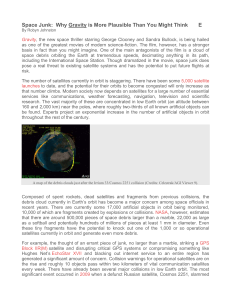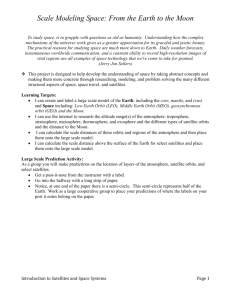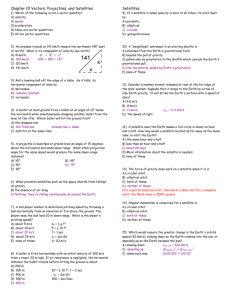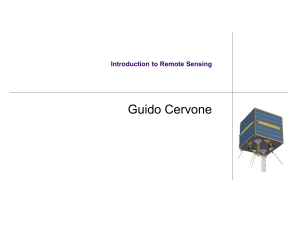Outline
advertisement
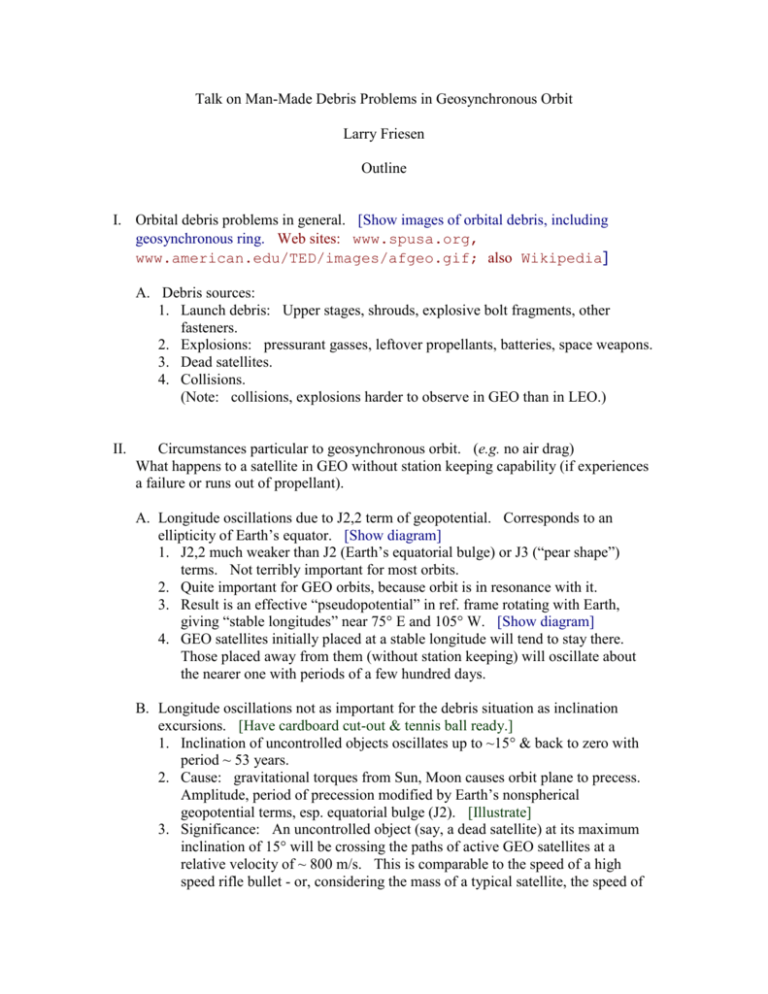
Talk on Man-Made Debris Problems in Geosynchronous Orbit Larry Friesen Outline I. Orbital debris problems in general. [Show images of orbital debris, including geosynchronous ring. Web sites: www.spusa.org, www.american.edu/TED/images/afgeo.gif; also Wikipedia] A. Debris sources: 1. Launch debris: Upper stages, shrouds, explosive bolt fragments, other fasteners. 2. Explosions: pressurant gasses, leftover propellants, batteries, space weapons. 3. Dead satellites. 4. Collisions. (Note: collisions, explosions harder to observe in GEO than in LEO.) II. Circumstances particular to geosynchronous orbit. (e.g. no air drag) What happens to a satellite in GEO without station keeping capability (if experiences a failure or runs out of propellant). A. Longitude oscillations due to J2,2 term of geopotential. Corresponds to an ellipticity of Earth’s equator. [Show diagram] 1. J2,2 much weaker than J2 (Earth’s equatorial bulge) or J3 (“pear shape”) terms. Not terribly important for most orbits. 2. Quite important for GEO orbits, because orbit is in resonance with it. 3. Result is an effective “pseudopotential” in ref. frame rotating with Earth, giving “stable longitudes” near 75° E and 105° W. [Show diagram] 4. GEO satellites initially placed at a stable longitude will tend to stay there. Those placed away from them (without station keeping) will oscillate about the nearer one with periods of a few hundred days. B. Longitude oscillations not as important for the debris situation as inclination excursions. [Have cardboard cut-out & tennis ball ready.] 1. Inclination of uncontrolled objects oscillates up to ~15° & back to zero with period ~ 53 years. 2. Cause: gravitational torques from Sun, Moon causes orbit plane to precess. Amplitude, period of precession modified by Earth’s nonspherical geopotential terms, esp. equatorial bulge (J2). [Illustrate] 3. Significance: An uncontrolled object (say, a dead satellite) at its maximum inclination of 15° will be crossing the paths of active GEO satellites at a relative velocity of ~ 800 m/s. This is comparable to the speed of a high speed rifle bullet - or, considering the mass of a typical satellite, the speed of an artillery shell. (Orbital velocity at GEO ~ 3.2 km/sec.) C. Current approach to dealing with situation: Save a little propellant at end of a satellite’s life to boost it up to “graveyard” orbits 200 - 300 km above GEO altitude. Sufficient to allow for altitude excursions in both orbits, plus a buffer between. Not enough to avoid altitude excursions of fragments of an explosion that occurs in graveyard orbit (hundreds to a few thousand km). Nor will it prevent collisions among objects in graveyard orbit. D. Concept I developed (w. Donald Kessler) to reduce plane precession: Place GEO satellites in a “stable plane”. Inclined ~ 7.3° to equator. Orbit pole tilted 7.3° from Earth’s rotation pole in direction of ecliptic pole. [Show diagram] Corresponds to invariant plane of Earth-Moon system, analogous to invariant plane of solar system. 1. Plane precession in such an orbit limited to relative inclinations ~ 1.2°. 2. A group of satellites put into such an orbit will precess together, so that their relative inclinations to each other will remain < 0.2°. (If each satellite carefully placed into the orbit plane of those already in place.) 3. Relative inclination of 1.2° reduces relative velocity to 67 m/s; 0.2° to 11 m/s (~ 25 mph). 4. Use of such an orbit would require ground-based satellite communication antennas to do a modest amount of tracking. Would probably also need a major policy decision about how nations of world want to use GEO orbit in future; for collision avoidance, probably not a good idea to put satellites into both stable plane & equatorial orbits. III. Open for questions/discussion. IV. If listeners ask: effects of radiation pressure on very small particles (e.g. solid rocket exhaust particles). Only significant for particles < 0.1 mm diameter, assuming aluminum oxide density. A. Eccentricity oscillation. Period ~ 1 year. Larger for smaller particles. For particle diameters < 72.5 m, max eccentricity so large that minimum perigee < 1 Earth radius...particles would collide with Earth within ~ 6 months. B. Radiation pressure provides an additional torque (on top of the gravitational torques) to drive orbit plane precession. The smaller the particle, the greater the max inclination, and the shorter the precession period. International Date Line N.P. 105 deg. W Prime Meridian 75 deg. E



